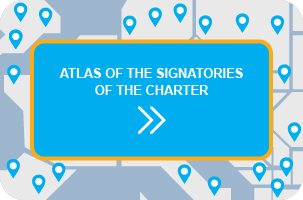Gender Equality requirements in Public Procurement
SALAR has published a guide to inform on the legal possibilities of imposing gender equality requirements on public procurements. The guide has primarily been elaborated for politicians who wish to increase their knowledge on gender equality issues and to improve quality of services. It provides concrete examples of how requirements on public procurement can be carried out, and aims to encourage local authorities to start using this as an instrument to advance gender equality. It is a question both of ensuring that all citizens are offered equal services regardless of gender but also a matter of increasing efficiency and quality of services. Additionally, there are laws in Sweden that require measures on anti-discrimination and that social factors are considered in the prerequisites when making public procurement contracts.
Studies on this subject underline the importance of setting social quality requirements already in the stage of choosing a supplier. For instance, setting a requirement on integrating a gender perspective encourages providers to develop and offer services that are in line with the gender equality objectives. Continuous monitoring is also essential in order to strengthen the incentives to develop socially responsible services. The requirements must therefore be clearly defined so that they are easy to follow-up.
SALAR has developed two checklists that can be used as a basis for discussion when establishing the requirements.
Before signing a contract, it is essential to do a feasibility study asking the following questions:
- Is it possible to integrate a gender equality perspective on this particular service?
- Does the public service concern women and men, girls and boys?
- Can this service have consequences that make it essential to do a gender analysis?
- Are the presented statistics related to the public service gender disaggregated? (This question is important when evaluating the background information)
- What impact will the procurement have on women and men, girls and boys? (This question can arise when it comes to the treatment, service or distribution of power and resources)
- Is there a connection between this public service and the gender equality objectives that the municipality or county has set up? (A feasibility study should include an examination of how the procurement can help the organization to achieve their gender equality objectives.)
- Are there any criteria for evaluation and is there a plan for follow-up?
It is also important to formulate measurable criteria or indicators for the evaluation of the public procurement from a gender perspective. Equality requirements should thus always be linked to the evaluation criteria. Likewise, it is important to define how the monitoring and evaluation will be carried out, and who is responsible for the various activities.
In order to verify if the requirements are accurate and appropriate, it can be useful to ask the following questions:
- Are the requirements enough comprehensive to meet their purpose?
- Are the requirements proportionate and non-discriminatory?
- Are the requirements measurable?
- Do the requirements have a connection to the procurement’s subject?
- Is it possible to compare and evaluate the (evaluation) requirements?
- Is it possible to control and follow-up the requirements?
- Are the requirements clearly formulated so that all contractors, national and international, are given the same possibilities to respond?
- Are the requirements compatible with other requests or technical conditions that are set out in the specifications?
Example of an equality requirement for procurement of health care in Stockholm County Council
Stockholm Country Council (SCC) states that they should guarantee provision of good health care on equal terms regardless of gender; therefore they have also set general requirements for companies or partners that enter in agreement with them. A precondition for entering in agreement with SCC is that the caregiver has to follow SCC’s equality policy which among other things includes taking part of an ongoing quality work and focus on providing equal treatment for women and men in healthcare. Furthermore, in the evaluation of activities all relevant key-figures and statistics should be reported divided on gender and age.













